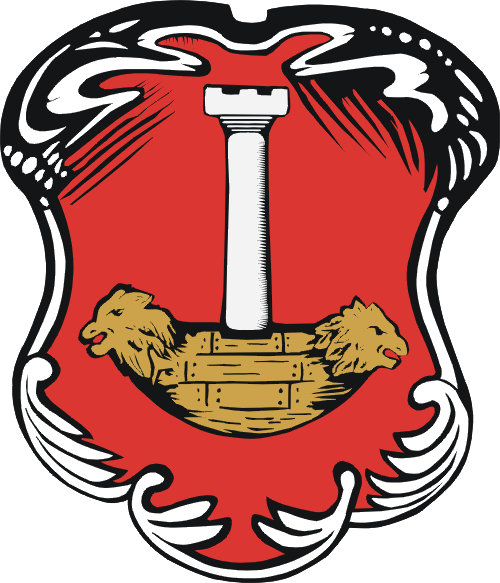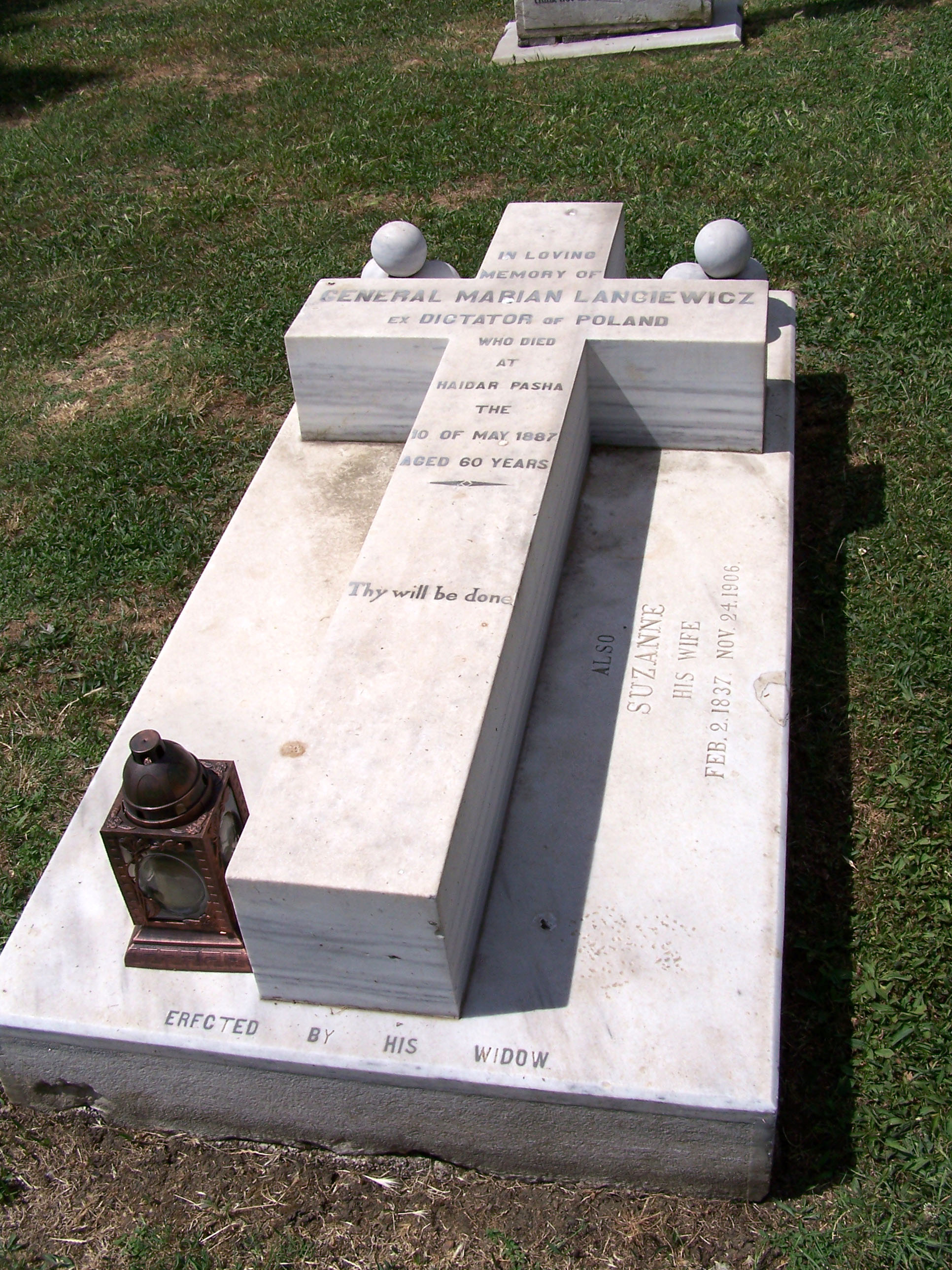|
Battle Of Staszów
The Battle of Staszów was part of the Polish January Uprising of 1863. When the uprising erupted Staszów became a gathering place for Russian infantry and artillery in the area, on the belief that Commander Marian Langiewicz Marian Langiewicz, full name Marian Antoni Melchior Langiewicz (; 5 August 1827, Krotoszyn – 11 May 1887, Istanbul), was a Polish patriot notable as a military leader of the January Uprising in 1863. Biography He was born in the province of ... was headquartered in the town. On February 12, 1863, Langiewicz's unit of 600 men departed in the direction of Raków from Święty Krzyż, as Langiewicz was unable to hold his troops against a Russian assault. While trying to outmanoeuvre the Russians Langiewicz entered Staszów on 14 February. The Polish revolutionaries waited for a Russian attack, it came on February 17. The Russian armies were under the command of Colonel Zagriashko, on February 18 the Polish revolutionaries finally withdrew their forc ... [...More Info...] [...Related Items...] OR: [Wikipedia] [Google] [Baidu] |
January Uprising
The January Uprising ( pl, powstanie styczniowe; lt, 1863 metų sukilimas; ua, Січневе повстання; russian: Польское восстание; ) was an insurrection principally in Russia's Kingdom of Poland that was aimed at the restoration of the Polish–Lithuanian Commonwealth. It began on 22 January 1863 and continued until the last insurgents were captured by the Russian forces in 1864. It was the longest-lasting insurgency in partitioned Poland. The conflict engaged all levels of society and arguably had profound repercussions on contemporary international relations and ultimately provoked a social and ideological paradigm shift in national events that went on to have a decisive influence on the subsequent development of Polish society. A confluence of factors rendered the uprising inevitable in early 1863. The Polish nobility and urban bourgeois circles longed for the semi-autonomous status they had enjoyed in Congress Poland before the previous insur ... [...More Info...] [...Related Items...] OR: [Wikipedia] [Google] [Baidu] |
Staszów
Staszów is a town in southeastern Poland, in Świętokrzyskie Voivodeship (historic province of Lesser Poland), about southeast of Kielce, and northeast of Kraków. It is the capital of Staszów County. The population is 15,108 (2010), which makes it the 8th largest urban center of the province. The area of the town is 26,88 km2, and its two rivers are the ''Desta'' and the ''Czarna Staszowska''. Staszów's coat of arms is the Korab, ancient symbol of several noble families of the Polish–Lithuanian Commonwealth. Moreover, Hieronymus Jaroslaw Łaski of Korab coat of arms, founded the town. Staszów remained in private hands until October 1866. It has a rail station, near the town also goes the Broad Gauge Metallurgy Line. The name of the town comes from given name Stanisław, which in the 13th and 14th centuries was used in diminutive form ''Stasz''. It is probable that the first owner of the town was a man named Stasz Kmiotko. Staszów is home to a sports club ''Po ... [...More Info...] [...Related Items...] OR: [Wikipedia] [Google] [Baidu] |
Marian Langiewicz
Marian Langiewicz, full name Marian Antoni Melchior Langiewicz (; 5 August 1827, Krotoszyn – 11 May 1887, Istanbul), was a Polish patriot notable as a military leader of the January Uprising in 1863. Biography He was born in the province of Posen, his father being the local doctor. Langiewicz was educated at Posen, Breslau and Prague, and was compelled to earn his daily bread by giving lectures. He subsequently entered the Prussian Landwehr and served for a year in the royal guard. In 1860 he migrated to Paris and was for a time professor in the high school founded there by Ludwik Adam Mieroslawski. The same year he took part in Giuseppe Garibaldi's Neapolitan campaign, and was then a professor in the military school at Cuneo till the establishment was closed. In 1862 he entered into communication with the central Polish committee at Warsaw, and on the outbreak of the insurrection, 22 January 1863, he took the command of the armed bands. He defeated the Russians at W� ... [...More Info...] [...Related Items...] OR: [Wikipedia] [Google] [Baidu] |
Battle Of Małogoszcz
The Battle of Małogoszcz took place on 24 February 1863 near Małogoszcz in the Holy Cross voivodeship. It was the one of biggest battles of the January Uprising. Polish general Marian Langiewicz began concentrating his forces in the Holy Cross Mountains; he wanted to attack Warsaw with them, but the Russians unveiled his attempts. He was attacked by a few Russian forces simultaneously. Langiewicz defeated them all in many skirmishes. Polish forces grew to 2,600 men most of them peasants armed with scythes. Russian colonel Colonel (abbreviated as Col., Col or COL) is a senior military officer rank used in many countries. It is also used in some police forces and paramilitary organizations. In the 17th, 18th and 19th centuries, a colonel was typically in charge o ... Dobrowolski attacked near Małogoszcz. The Russians shelled Polish positions, but their attack was eventually smashed by a Polish cavalry counterattack. Langiewicz ordered a retreat. The battle was indecisive - ... [...More Info...] [...Related Items...] OR: [Wikipedia] [Google] [Baidu] |
Conflicts In 1863
Conflict may refer to: Arts, entertainment, and media Films *Conflict (1921 film), ''Conflict'' (1921 film), an American silent film directed by Stuart Paton * Conflict (1936 film), ''Conflict'' (1936 film), an American boxing film starring John Wayne * Conflict (1937 film), ''Conflict'' (1937 film), a Swedish drama film directed by Per-Axel Branner * Conflict (1938 film), ''Conflict'' (1938 film), a French drama film directed by Léonide Moguy * Conflict (1945 film), ''Conflict'' (1945 film), an American suspense film starring Humphrey Bogart * Catholics (film), ''Catholics: A Fable'' (1973 film), or ''The Conflict'', a film starring Martin Sheen * Judith (1966 film), ''Judith'' (1966 film) or ''Conflict'', a film starring Sophia Loren * Samar (1999 film), ''Samar'' (1999 film) or ''Conflict'', a 1999 Indian film by Shyam Benegal Games * Conflict (series), ''Conflict'' (series), a 2002–2008 series of war games for the PS2, Xbox, and PC * Conflict (video game), ''Conf ... [...More Info...] [...Related Items...] OR: [Wikipedia] [Google] [Baidu] |
Battles Of The January Uprising
A battle is an occurrence of combat in warfare between opposing military units of any number or size. A war usually consists of multiple battles. In general, a battle is a military engagement that is well defined in duration, area, and force commitment. An engagement with only limited commitment between the forces and without decisive results is sometimes called a skirmish. The word "battle" can also be used infrequently to refer to an entire operational campaign, although this usage greatly diverges from its conventional or customary meaning. Generally, the word "battle" is used for such campaigns if referring to a protracted combat encounter in which either one or both of the combatants had the same methods, resources, and strategic objectives throughout the encounter. Some prominent examples of this would be the Battle of the Atlantic, Battle of Britain, and Battle of Stalingrad, all in World War II. Wars and military campaigns are guided by military strategy, wherea ... [...More Info...] [...Related Items...] OR: [Wikipedia] [Google] [Baidu] |
History Of Świętokrzyskie Voivodeship
History (derived ) is the systematic study and the documentation of the human activity. The time period of event before the invention of writing systems is considered prehistory. "History" is an umbrella term comprising past events as well as the memory, discovery, collection, organization, presentation, and interpretation of these events. Historians seek knowledge of the past using historical sources such as written documents, oral accounts, art and material artifacts, and ecological markers. History is not complete and still has debatable mysteries. History is also an academic discipline which uses narrative to describe, examine, question, and analyze past events, and investigate their patterns of cause and effect. Historians often debate which narrative best explains an event, as well as the significance of different causes and effects. Historians also debate the nature of history as an end in itself, as well as its usefulness to give perspective on the problems of the p ... [...More Info...] [...Related Items...] OR: [Wikipedia] [Google] [Baidu] |
February 1863 Events
February is the second month of the year in the Julian and Gregorian calendars. The month has 28 days in common years or 29 in leap years, with the 29th day being called the ''leap day''. It is the first of five months not to have 31 days (the other four being April, June, September, and November) and the only one to have fewer than 30 days. February is the third and last month of meteorological winter in the Northern Hemisphere. In the Southern Hemisphere, February is the third and last month of meteorological summer (being the seasonal equivalent of what is August in the Northern Hemisphere). Pronunciation "February" is pronounced in several different ways. The beginning of the word is commonly pronounced either as or ; many people drop the first "r", replacing it with , as if it were spelled "Febuary". This comes about by analogy with "January" (), as well as by a dissimilation effect whereby having two "r"s close to each other causes one to change. The ending of the ... [...More Info...] [...Related Items...] OR: [Wikipedia] [Google] [Baidu] |




.jpg)
